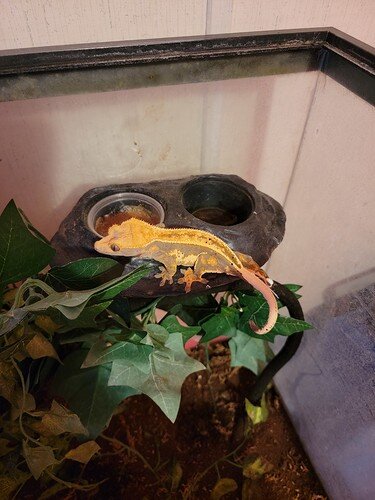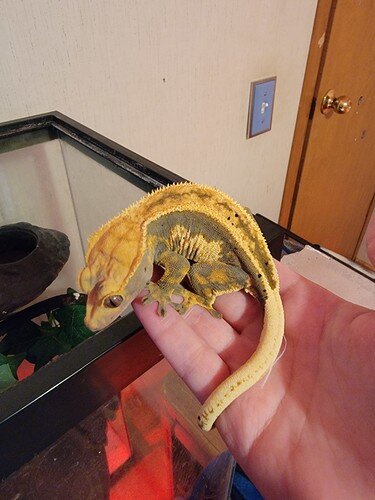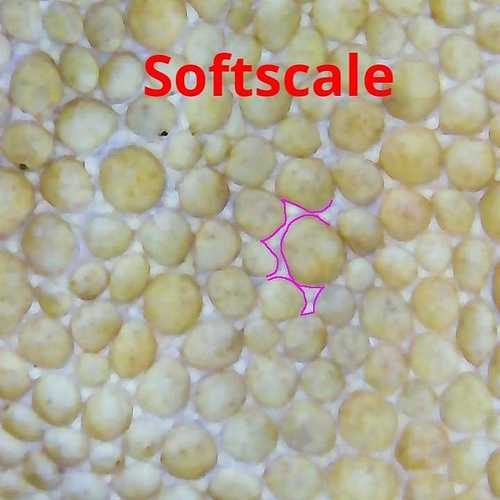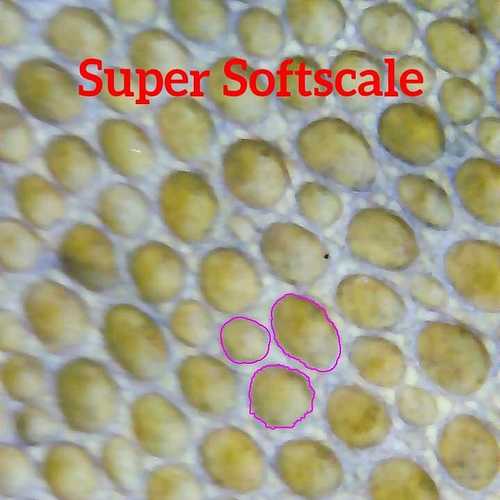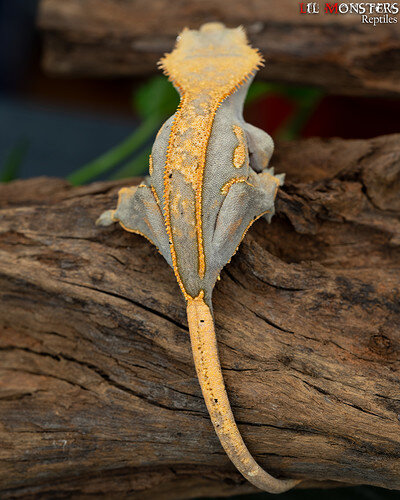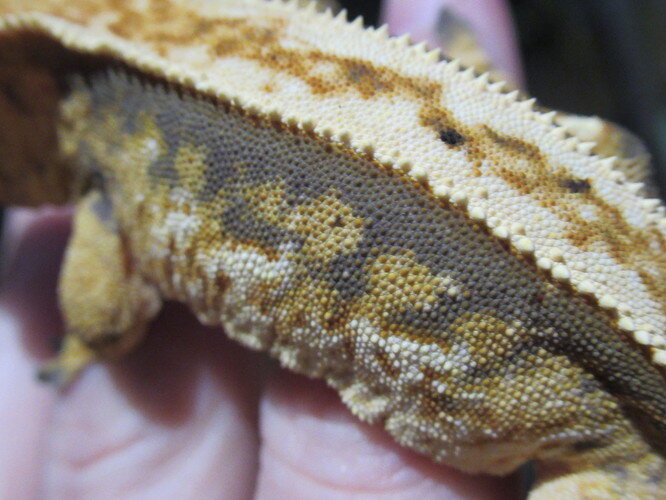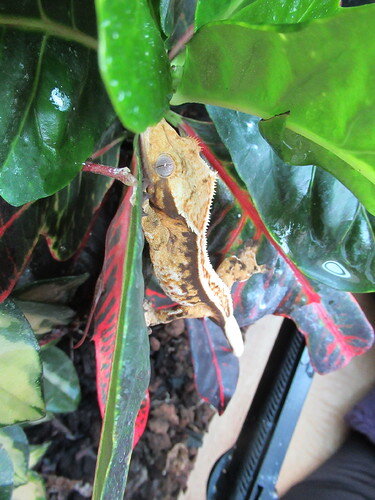Received my new Crestie yesterday, a soft scale weighing 6g 
Anyone else have soft scales? would love to see some pics.
I don’t know much about cresties but I like to learn- what is soft scale? Your little one is super cute!
Thank you.
Cresties have many different colours/traits/morphs. Eg this is currently a Lavender, whiteout, pinstripe, tri-colour.
Although may change a little as it grows.
Soft scales are quite rare, in UK at least… It took me ages to get one. It can be quite difficult to tell though.
They usually feel softer than the average Crestie, have grey eyes with ring around it, usually brighter in colour and the scales are wider apart and more even spread than the average Crestie.
I have 12 Cresties… All different, I love that about Cresties 
Here’s my soft scale girl! I have a few babies that could also be soft scale, but I’m not positive if they are or not.
No geckos here, only snakes but if I ever do it would definitely be a crestie or leachy.
Walker girl your soft scale is so cute  I bet the babies are cute too.
I bet the babies are cute too.
I plan to breed mine in the future but that’s a few years away yet.
And snaxxs, I don’t have a leachie but seen pics, they are cool too… I’m still a Crestie fan though, if rather more Cresties 
I love the size and camouflage of Leachies. Gargoyles are cool too.
Soft-scale is a synonymous morph to Scalelesshead and LeatherBack, the individual scales are reduced in size which changes the overall texture of the animal. There is a superform, the scales on those are reduced further giving the animal a silkier texture.
That is definitely a better way of explaining it, I struggled lol
The super form is called super soft scale
I have some macro shots of this, we made an IG post about it when AC and a few other breeders were proving the trait. We have over 30 and they are INCREDIBLE when combined with different morphs.
Normal
Softscale
Super Softscale
This is our Super girl named SunnyBlue
Wow she is beautiful. I love the pics you’ve done of the scales, I was thinking of doing something similar.
I hope to get a super soft scale  and I hope to get the soft scale into the Lilly White trait to see how that turns out.
and I hope to get the soft scale into the Lilly White trait to see how that turns out.
But I have a few years ahead of me before I can look into that 
Very cool pics, thanks for sharing!
Does Softscale require special husbandry or ever cause issues with shedding? I’ve read that some people associate the analogous traits @t_h_wyman mentioned with health issues and/or a need for husbandry adjustments relative to normally scaled conspecifics. I do not have any personal experience with any animals with these traits, so I’m very curious to learn and hear from others!
They still have scales, they are just slightly reduced in size, as shown in the microscope shots above, I think 1000X magnification. So there is no difference in husbandry. We have had some hatchlings showing thinner shed than normal but if your humidity is on point with the rest of your collection you should have no issues as everything else is the same. If you generally have shed issues with your animals, (e.g. finding it in the enclosure or still on your pet) then you will experience the same issues with the softscale morph.
Other than that they look like they have a matte-colored paint job. They are also noticeably softer to the touch. The colors tend to be more vibrant as this is a structural morph and therefore modifying the chromatophore causing light to refract differently. The morph is incomplete dominant and can be added to any project in just a single generation so the result come fast. Generally, blacks are darker, orange base is softer in color and looks like sherbet, dalmatian spots are deeper, and yellow, red, and white morphs are the least affected. Halloween morphs look amazing, and the lavender morph in my post seems to benefit the most producing a blueish-colored hues as a structural morph should affect the iridophores the most as this is responsible for light refraction.
I just read that I was going to ask if they had any special care, LOL
I agree, I did lots of research and the requirements do not differ from other Cresties.
Looking at lmr_lmreptiles Crestie, I’m not convinced mine will remain a Lavender… Will have to see when it grows up. I’m not too fussed as I’d much rather a lil Crestie so I can see it grow 
I’m definitely hoping for a super soft one day 
So we have some soft (what we’ve been told from breeders) if anyone can take a look for me? Would like some more opinions of peoples!
Also our male we’ve just looked at with a loop and wondering if a super soft as big gaps. All we know is he’s from Europe and unfortunately wasn’t told anything else at all!  Thankyou in advance! X
Thankyou in advance! X
I am wondering the same about one of my Cresties. Since getting my definite soft scale, it’s made me question one of my other Cresties, she can’t with no info, other than from Lilly White pairing
I will take a look at the pictures you (elish9) send them to see if I can be of any help on yours & maybe someone else might be able to as well.
Meanwhile if anyone could offer their opinion on this Crestie, that would be great 
The pictures above helped a lot I must say! Very thankful for those and my gosh been a pain trying to find some decent images to go by!
See it’s hard when you’ve got no info at all! I have some here with no info at all as either forgotten or they just didn’t know/ask. Which I don’t mind but when you’d like to know lines thats when it’s a pain! And now with soft scales about more too…
I can see why you think yours is one too, especially if you go by images above! 
It’s so hard esp because of the Lilly White gene. I don’t know how big of a part that could play into it, but my other Cresties from Lilly White pairings aren’t as soft as her, including her sister.
I never thought about her being a soft scale until I resesrched out got my own soft scale and I was more and more convinced… Her scales are quite far apart and she is super soft to touch, softer than the soft scale.
If she isn’t a soft scale, I’m curious as what she is. She has so much genes going for her and such vibrant colours.
I can’t wait to breed her, hopefully next year… But would be good to know if she is something to do with the soft scale gene before I pair her

